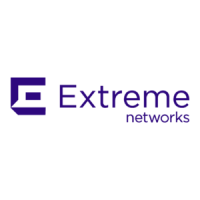Status Monitoring and Statistics
ExtremeWare XOS 11.3 Concepts Guide
210
for analysis. sFlow consists of a Management Information Base (MIB) and a specification of the packet
format for forwarding information to a remote agent. Details of sFlow specifications can be found in
RFC 3176, and specifications and more information can be found at the following website:
http://www.sflow.org
The ExtremeWare XOS implementation is based on sFlow version 5, which is an improvement from the
revision specified in RFC 3176. Additionally, the switch hardware allows you to set the hardware
sampling rate independently for each module on the switch, instead of requiring one global value for
the entire switch. The switch software also allows you to set the individual port sampling rates, so you
can fine-tune the sFlow statistics gathering. Per the RFC, sFlow sampling is done on ingress only.
NOTE
On the BlackDiamond 8800 family of switches, sFlow and mirroring are mutually exclusive. You can enable either
sFlow, or mirroring, but not both.
However, you should be aware of a few limitations in the current release. The current release supports:
● Generic port statistics reported to the sFlow collector
● Non-extended data
● Only those packets that do not match an ACL rule are considered for sampling
● Only port-based sampling
● No MIB support
Configuring sFlow
ExtremeWare XOS allows you to collect sFlow statistics on a per port basis. An agent, residing locally
on the switch, sends data to a collector that resides on another machine. You configure the local agent,
the address of the remote collector, and the ports of interest for sFlow statistics gathering. You can also
modify default values for how frequently on average a sample is taken and the maximum number of
samples allowed before throttling the sample gathering.
To configure sFlow on a switch, you must do the following tasks:
● Configure the local agent
● Configure the addresses of the remote collectors
● Enable sFlow globally on the switch
● Enable sFlow on the desired ports
Optionally, you may also change the default values of the following items:
● How often the statistics are collected
● How frequently a sample is taken, globally or per port
● How many samples per second can be sent to the CPU
Configuring the Local Agent
The local agent is responsible for collecting the data from the samplers and sending that data to the
remote collector as a series of UDP datagrams. The agent address is stored in the payload of the sFlow
data, and is used by the sFlow collector to identify each agent uniquely. By default, the agent uses the

